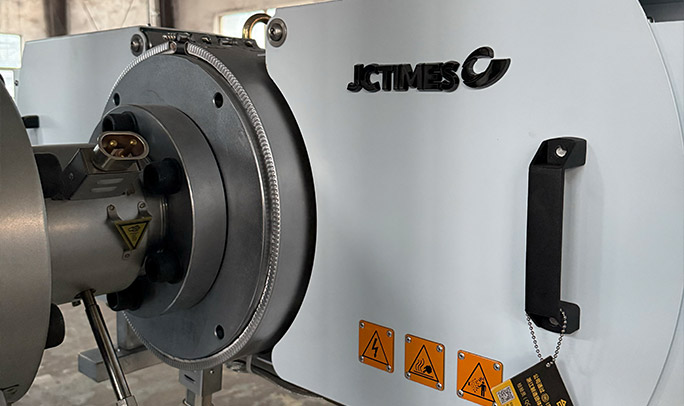Proper maintenance and service of a thermoforming machine are essential to ensure its efficient operation, prolong its lifespan, and maintain the quality of the thermoformed products. Here are the key steps and areas to focus on:

Cleaning
Heating Elements: Regularly clean the heating elements such as infrared heaters or ceramic heaters. Dust and debris can accumulate on them over time, reducing their heating efficiency. Use a soft, dry brush or a vacuum cleaner with a brush attachment to gently remove any loose particles.
Mold Cavities: After each production run, clean the mold cavities thoroughly. Residual plastic can stick to the mold, affecting the shape and quality of subsequent products. Use a suitable mold - cleaning agent and a soft cloth or non - abrasive brush to clean the mold. Avoid using sharp tools that could scratch the mold surface.
Clamping System and Frame: Wipe down the clamping system and the frame of the machine to remove any plastic shavings, dust, or spills. This helps to prevent these particles from getting into the mechanical parts or the heating system.
Lubrication
Moving Parts: Check and lubricate all moving parts such as the chains, gears, and slides of the machine. Use a high - quality lubricant recommended by the machine manufacturer. For example, if the machine has a conveyor belt system for moving the plastic sheets, lubricate the rollers and axles to ensure smooth operation and prevent wear and tear.
Vacuum and Pressure Systems: Inspect the vacuum and pressure systems. Lubricate the valves and seals if necessary to maintain proper airtightness. A well - lubricated vacuum pump can operate more efficiently and have a longer service life.
Inspection of Electrical Components
Wiring and Connectors: Check the electrical wiring for any signs of damage such as frayed wires, loose connections, or exposed conductors. Tighten any loose connectors and replace damaged wires immediately to prevent electrical hazards and machine malfunctions.
Control Panels: Clean the control panel with a dry, lint - free cloth. Check the buttons, switches, and displays for proper functionality. If any of the controls seem unresponsive or erratic, it may indicate a problem with the internal circuitry or software, and further investigation by a qualified technician may be required.
Calibration of Temperature and Pressure Settings
Temperature Sensors and Controllers : Use a calibrated thermometer to verify the accuracy of the temperature sensors in the heating system. If there is a significant deviation from the set temperature, adjust the temperature controller accordingly. Incorrect temperature settings can lead to poor quality thermoforming, such as under - formed or over - heated plastic products.
Pressure Gauges and Regulators : Check the pressure gauges in the vacuum and pressure systems. Calibrate them if necessary to ensure accurate pressure readings and proper pressure regulation. The correct pressure is crucial for achieving the desired shape and quality of the thermoformed products.
Mold Inspection and Maintenance
Mold Wear and Tear : Inspect the molds for signs of wear such as scratches, dents, or warping. Minor scratches can sometimes be polished out, but more severe damage may require mold repair or replacement. Regular mold inspection helps to identify problems early and prevent defective products.
Mold Alignment : Check the alignment of the molds. If the molds are misaligned, it can result in uneven thickness of the thermoformed products or incomplete formation. Use precision tools such as dial gauges to ensure proper mold alignment and make adjustments if needed.
System Performance Testing
Vacuum and Pressure System Testing : Conduct a comprehensive test of the vacuum and pressure systems. Check the vacuum pump's suction power and the pressure system's output pressure. Measure the time it takes to reach the required vacuum or pressure levels and compare it with the machine's specifications. If there is a significant decrease in performance, it may indicate a problem with the pumps, valves, or hoses.
Heating System Performance : Test the heating system's ability to heat the plastic sheets evenly. Use an infrared thermometer to measure the temperature distribution across the plastic sheet during the heating process. Uneven heating can lead to inconsistent product quality. If the heating is uneven, check the heating elements for damage or misalignment and make the necessary adjustments or replacements.
Major Component Overhaul
Mechanical Components : Disassemble and inspect major mechanical components such as the drive motors, conveyor belts, and gearboxes. Replace any worn - out parts such as bearings, belts, or gears. This helps to prevent unexpected breakdowns and ensures the smooth running of the machine for the next year.
Electrical System Upgrade : Consider having an electrician review the electrical system of the machine. They can check for any outdated components, such as old - fashioned relays or fuses, and recommend upgrades to more modern and reliable electrical components. This can improve the machine's safety and performance.
Mold Refurbishment or Replacement
Mold Refurbishment : If the molds have experienced significant wear over the year, it may be time to refurbish them. This can involve processes such as resurfacing, re - texturing, or adding new features to the molds. Refurbished molds can often produce products with the same quality as new molds at a lower cost.
Mold Replacement : In cases where the molds are severely damaged, warped beyond repair, or no longer meet the production requirements (such as for a new product design), replace the molds. When replacing molds, ensure that they are properly installed and calibrated to work with the thermoforming machine.
| Shipping | by sea |
| Sample lead timee | 10~20 days |
| Delivery time | about 30-45 days after order details and production confirmed. |
| Shipping | by sea |
| Sample lead timee | 10~20 days |
| Delivery time | about 30-45 days after order details and production confirmed. |